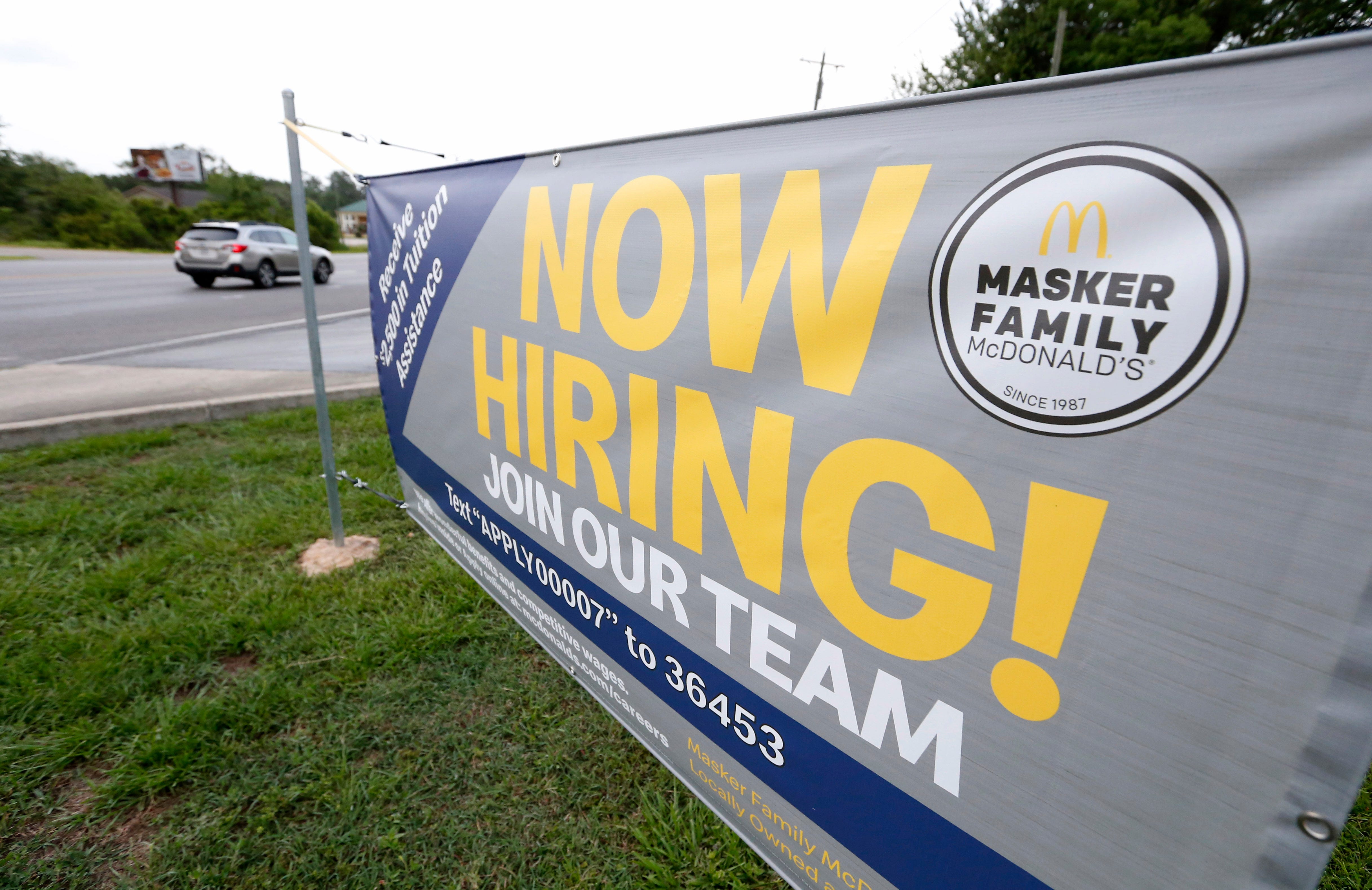LATEST FINANCIAL NEWS
Employers added solid 164,000 positions in July
[ad_1]
U.S. job growth was solid for a second straight month in July as employers added 164,000 jobs, further allaying recession worries and doing little to bolster the Federal Reserve’s case for another interest rate cut next month.
The unemployment rate was unchanged at 3.7%, just above a 50-year low, the Labor Department said Friday.
Economists expected 165,000 job gains, according to a Bloomberg survey.
Mildly disappointing: Payroll gains for May and June combined were revised down by a total 41,000. May’s additions were revised from 72,000 to 62,000, and June’s, from 224,000 to 193,000.
Hiring has slowed this year to an average monthly pace of 165,000 from 223,000 in 2018, but that’s still a solid performance and more than enough to keep lowering the jobless rate. Economists largely blame the the low unemployment rate, which means employers have a harder time finding available workers.
“We’re getting jobs (growth) probably better than might have been expected,” says Joel Naroff of Naroff Economic Advisors. “It’s moderate growth that’s sustainable.”
But analyst also trace the downshift to the fading effects of federal tax cuts and spending increases, the sluggish global economy and President Trump’s trade war with China, which has damped business confidence and investment. Over the past three months, job growth has averaged just 140,000.
The upshot is that consumer spending – which makes up 70% of the economy – is healthy and jobs in service industries such as health care and professional services continue to grow smartly. But manufacturing payrolls, which depend more on sales abroad, largely have been stagnant.
The Fed lowered its key interest rate this week for the first time in more than a decade because policymakers worry the global troubles, lackluster business spending and stubbornly low inflation eventually could derail the record 10-year-old economic expansion. Another cut could be on the way as soon as September if those risks combine with an escalating trade war and weakening labor market.
Trump on Thursday said he’ll slap a 10% tariff on the remaining $300 billion in Chinese imports not subject to duties. That increases the likelihood of a September rate cut, says economist Jim O’Sullivan of High Frequency Economics.
A Whopper with no meat: Burger King’s plant-based Impossible Whopper is coming to restaurants nationwide
Wage growth picks up
Average hourly earnings rose 8 cents to $27.98, pushing up the annual gain from 3.1% to 3.2%.
That’s a good sign. Yearly pay increases began topping 3% in the second half of 2018 but haven’t picked up further steam. That has kept inflation muted, giving the Fed another reason to reduce rates in the months ahead.
Industries that are hiring
Health care led the job gains with 50,000. Professional and business services added 38,0000; financial services, 18,000 and leisure and hospitality, 10,000.
Manufacturing, which has been hurt by a slowing global economy and the trade conflicts, added a solid 16,000 jobs. Construction added 4,000. And retailers, which have been hurt by the shift to online shopping, lost 3,600 jobs.
Before the report was released, Goldman Sachs estimated government hiring related to the 2020 census would boost July job gains by 10,000 to 20,000. That’s not immediately evident in the numbers. The federal government added just 2,000 jobs. States added none while local governments added 14,000.
Labor force participation rises
The share of American adults working or looking for jobs ticked up to 63% from 62.9%, close to the highest levels in the past five years. A healthy labor market that’s offering more jobs and higher wages has attracted discouraged workers, seniors, disabled people and others on the sidelines – a positive development for household incomes.
That has offset a longer-term decline in labor force participation caused by baby boomer retirements and kept the unemployment from falling last month. The return of many Americans to the work force also has provided a surplus labor pool that has kept wages and inflation from rising more rapidly, allowing the Fed to keep interest rates low. Eventually, the participation rate is expected to resume its longer-term drop.
Temporary workers, weekly hours: A signal?
The number of temporary workers dispatched by staffing agencies rose by just 2,200, the third straight tepid showing. And the average work week dipped to 34.3 hours from 34.3 hours in June and 34.5 hours a year ago.
Employers tend to reduce both temps and weekly hours before pulling back hiring, though it may be a bit early to read too much into the latest numbers.
What it means
The solid report affirms the economy is still chugging along but it clearly shows that hiring is slowing. That’s partly a natural result of a low unemployment rate that spells fewer available workers but it also reflects trade tensions and a slowing economy. It’s the trade conflict that will likely prod the Fed to cut rates again next month.
[ad_2]
Source link









